
Arctic Explorer Challenge
November 17, 2025
Can You Spot the 8 Polar Animals Hiding in The Tech Interactive?

- Related Topics:
- Special Events,
- Education,
- What's New at The Tech Interactive
Grab your binoculars and embark on a Polar expedition during Polar Play Days at The Tech Interactive!
Between your making and tinkering in Tech Studio and immersing yourself in Dream Garden, be on the lookout for our elusive North and South pole visitors hiding throughout the building. For a deeper dive into the wonders of the Arctic, catch a screening of "Dinosaurs of Antarctica" or “Arctic: Our Frozen Planet” in the IMAX® Dome Theater!
North Pole Animals
Snowy Owl

Narwhal

Polar Bear

Atlantic Puffin
South Pole Animals
Hourglass Dolphin
Yeti Crab

Wandering Albatross

Leopard Seal
Snowy Owl

The Snowy Owl lives in the Arctic Tundra, feeding mostly on small mammals such as lemmings, voles, and mice. They typically grow 21-28 inches tall and have a 50-57 inch wingspan making them one of the largest owls in the world.
As you might have guessed, the Snowy Owl gets its name from its thick snowy white feathers. In fact, they even have feathers on their feet to keep their feet warm in arctic temperatures. It’s like having fuzzy slippers built in!
Narwhal
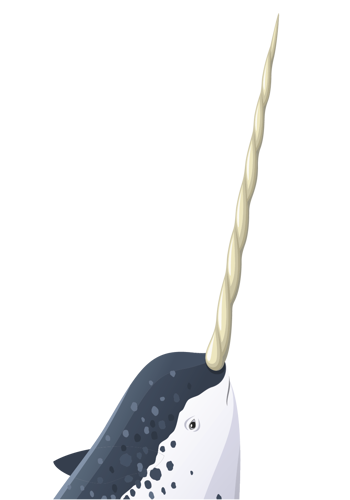
Although many believe it to be a mythical creature, the narwhal is quite real! Narwhals live in Arctic waters near Canada, Greenland, and Russia and feed on fish, shrimp, and squid. Narwhals can grow up to 18 feet long and weigh up to 3,500 pounds.
The Narwhal’s large protruding tusk from the front of their heads earned them the nickname “Unicorn of the Sea.” This spiral “tusk” is actually a large tooth, which can grow as long as 10 feet!
Polar Bear
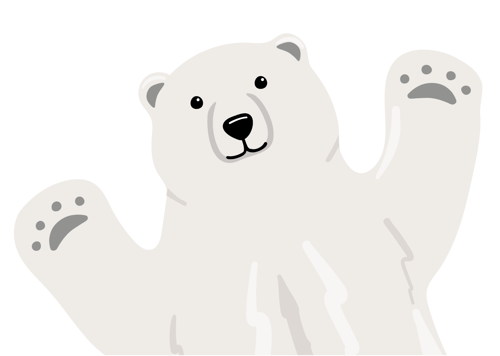
Polar bears primarily live on sea ice in the Arctic regions of Canada, Alaska, Greenland, Russia, and Norway, feeding on seals, walruses, and beluga whales. Male and female polar bears vary greatly in size with females growing up to 650 pounds and 6.5 feet tall while males can grow all the way up to 1800 pounds and 8.2 feet tall!
While polar bears might appear white, their skin is actually black! Their fur is actually translucent and appears white because it reflects visible light. This allows them to remain somewhat camouflaged in their native habitat.
Atlantic Puffin
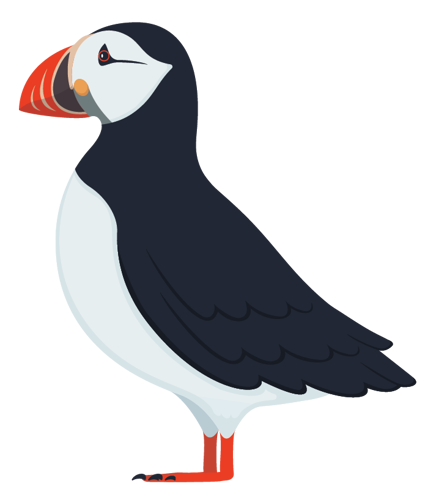
Although they may look like penguins, Puffins are not actually part of the penguin family. These bright beaked seabirds can fly but spend most of their lives living at sea either swimming or resting on the waves of North Atlantic waters.
Puffins dive into the ocean to grab their meals of fish, shrimp, crustaceans, and mollusks. They are excellent divers and can dive up to 200 feet deep, which is the length of 6 full size school buses!
Hourglass Dolphin

Not to be confused with its much bigger cousin, the orca, Hourglass Dolphins only grow to be about 6 feet in length and 200 pounds. These dolphins live in Antarctic and sub-antarctic waters and are rarely seen by humans. They are very social animals travelling in groups of up to 100 other dolphins and feed on shrimp, worms, squid, and small fish.
Due to their distinct black and white markings, Hourglass Dolphins have earned the nicknames of “sea skunks” and “sea cows.”
Yeti Crab
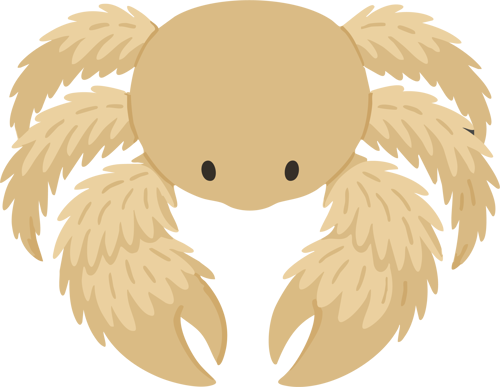
Discovered in 2005, the Yeti Crab has glorious blonde locks on its legs and pincers that are covered in bacteria. These bacteria are the primary source of food for the Yeti Crab and are thought to detoxify poisonous minerals coming from the hydrothermal vents where the Yeti Crab lives. Not a lot is known yet about these furry crabs since they were only discovered 20 years ago!
Wandering Albatross

The Wandering Albatross lives on the Southern Ocean, between Antarctica and New Zealand feeding primarily on cephalopods, small fish, and crustaceans. They spend nearly all their life in flight only landing to feed and breed.
These birds are incredibly large growing up to 3.5 and 4.5 feet tall with a wingspan of up to 11 feet. The largest recorded wingspan of any bird on the planet was actually of a Wandering Albatross measuring at 12 feet long!
Leopard Seal
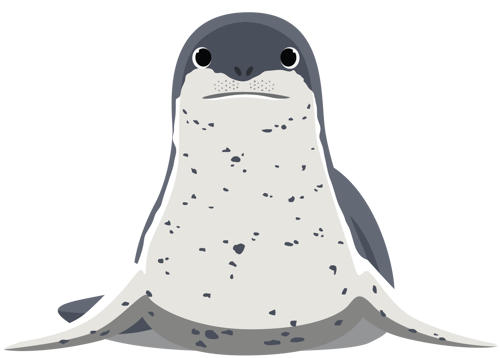
Leopard seals live on the Antarctic ice feeding on krill, squid, fish, and penguins. These seals can be highly variable in size growing to anywhere between 8 and 11.5 feet long and 440 to 1,320 pounds.
Leopard seals are very vocal but male leopard seals are also considered great singers! Each male has a distinct “song” they use to guard their territory or attract a mate during the mating season.
 Skip Navigation
Skip Navigation
